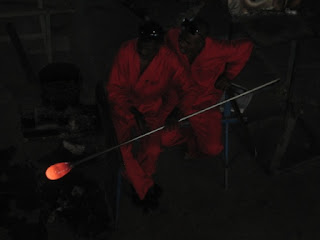- Monday, March 1 – Arrival Swaziland
- Tuesday, March 2 – Literacy Workshop, Swaziland
- Wednesday, March 3 – Swazi Candles, Mkhaya Game Reserve, Swaziland
- Thursday, March 4 – Mkhaya Game Reserve, Swaziland
- Friday, March 5 – Mkhaya Game Reserve, Swaziland
- Saturday, March 6 – Pietermaritzburg, South Africa
- Sunday, March 7 – Pietermaritzburg, South Africa
- Monday, March 8 – Artisan Tour, Swaziland
- Tuesday, March 9 – Miliwane Game Reserve, Swaziland
- Wednesday, March 10 – Royal Swazi Spa, Swaziland
- Thursday, March 11 – Cape Town, South Africa
- Friday, March 12 – Cape Town, South Africa
- Saturday, March 13 – Cape Town, South Africa
- Sunday, March 14 – Cape Town, South Africa
- Monday, March 15 – Cape Town, South Africa
- Tuesday, March 16 – Cape Town, South Africa
- Wednesday, March 17 – Cape Town, South Africa
- Thursday, March 18 – Souvenir Shopping, Swaziland
- Friday, March 19 – Departure Swaziland
This entry is all about our journey on Monday, March 8 as we toured around Swaziland visiting many of the local artisan workshops, factories, and showrooms. We started our day at Ngwenya Glass Factory where recycled glass is turned into beautiful handmade wares. We toured the workshop where the men and women were using their hands or tools to make shapes out of the putty like hot glass. Some did actually blow through a long pipe to form a wine glass, while others rolled their steel rod quickly between their hands to spin a desired shape. It was quite impressive.
Everything at Ngwenya starts as recycled glass

Working their magic


Blowing a wine glasses

Ice bucket

The final step in the process, once the glass has completely cooled, is sanding and buffing

Drum roll…the finished products!



Next stop on our tour was the Manzini Market. Manzini is the largest city in Swaziland (population ~80,000) and people set-up stalls daily to sell poultry, fruit, vegetables, clothes, arts & crafts, grains, beans, etc. You name it, they sell it… you can even pick-up underwear, shoes, an exhaust pipe for your car, broom, recycled cell phone…the list goes on!
Main entrance

Makes (mothers) selling vegetables


Stalls

Arts and crafts

After the Manzini Market we made our way to the Malkern’s Valley to visit the Baobab Batik factory. Along the way, we stopped to take pictures of the pineapple fields (I don’t know where I thought pineapples came from, but I just didn’t picture them growing on bushes such as these!).


The Baobab Batik factory permitted us to tour their entire facility and to see the batiks being made at each phase of the process. The women who work at the factory are very talented artists and craftswomen. Again, very impressive.

Dyed cloth drying in the sun

Drawing the design/pattern on the dyed cloth

Painting the wax on the pattern

Dyeing the cloth in a second color

More wax and more dyeing

Finished products drying on the line

The sewing room. Here the ladies take the final batiks and make table runners, napkins, tablecloths, pillow covers, aprons, backpacks, t-shirts, and more!

Next it was time for lunch. While I have been to this restaurant and concert venue numerous times, it is usually for dinner or an evening concert; therefore, I took the opportunity to take pictures during the daylight. The restaurant is called, Malandela’s and the concert venue is called, House on Fire. It is locally owned and operated and was built to showcase local artists, musicians, and singers. The design is very eclectic.
Restaurant entrance

View from the table

Indoor amphitheatre

Gallery

Bar

Our final stop on the tour was the Cultural Village where we saw traditional singing and dancing. Thankfully, Felicia’s camera had all of the videos of me being pulled from the audience to dance with the performers and there aren’t any to upload, now!



Traditional Healer










No comments:
Post a Comment